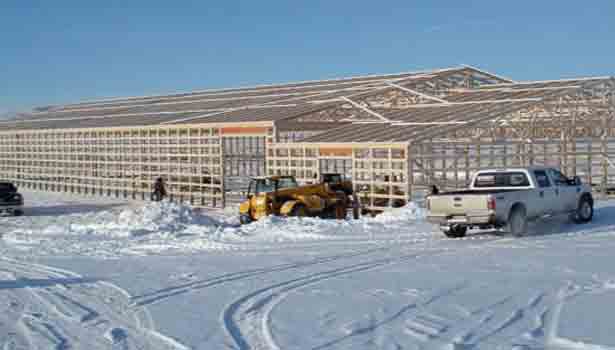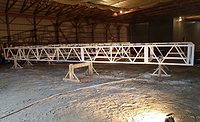Avoiding Winter Corrosion
Corrosion expert delves into the challenges and solutions of painting this winter.

The cold and inclement forecast of winter brings with it a hardship for many owners, engineers and architects, among others. This is the time of year that is responsible for most of the corrosion issues that occur due to inadequate paint jobs. However, this does not mean that one should put off a necessary new coating, but it just makes the preparation and research that much more vital.
“While painting in cold weather is not the ideal situation, by no means is it impossible,” says Warren Brand, Principal of Chicago Coatings Group. “Inclement weather makes the process of selecting materials more important, as you have to find a paint that will cure down to lower temperatures.”
If one is planning to paint in the colder weather, it is important to understand the challenges as well as the optimal available solutions. Brand outlines the four biggest challenges facing winter painters and offers up a solution or two for each.
Challenge: The cold typically changes the way that materials are applied. This can make paints thicker and harder to work with.
Solution: Do some quality research. The necessary paint for this job may not be at a local hardware store. By calling a larger paint company, one can find cold- or fast-cure paint systems. For example, epoxy paint systems simply require a different part “B” or an additive to make it a cold-cure system; these are generally available if asked for.
Challenge: Moisture can freeze on the surface, which causes serious application problems and premature coating failure.
Solution: Be sure the surface is dry. This can be the biggest difficulty, because it is tough to see if a surface is dry when the temperature dips below 32 °F. A nice trick is to safely warm up the area by putting a tissue down on the surface with one hand. The hand will warm the area, causing any ice to melt while it will be visible on the tissue if there is wetness.
The other option is to utilize supplemental heat to warm the area or asset to be painted. It is important to be careful when doing this and pay attention to the substrate temperature and not the air temperature. For example, if painting a fire hydrant, one can build a tent around the hydrant. Check the temperature of the steel and not that of the air inside the tent.
Challenge: Applying the material on a cold surface will sometimes cause the paint to freeze or thicken to an extent that it is difficult or even impossible to apply.
Solution: Consider the substrate that is being painted, as metallic or non-porous substances will be easier to paint than wood or concrete substrates, since it can prove difficult to determine the dampness of these surfaces. Be sure that the material that is being used will dry. Avoid applying paints that may take up to two weeks to cure, especially if it could be rubbed or damaged in the meantime.
Challenge: The paint may not properly cure, or stay soft for long periods of time.
Solution: Follow the paint documents closely. Read and understand the paint directions. Some cold-cure systems require an induction or “sweat in” time for proper performance. The induction time is the amount of time a paint must sit after it has been mixed in order for the chemicals begin interacting. This time is often dependent on the temperature. For example, if it is 10 °F, the induction time may be 12 minutes, whereas a 25 °F temperature may only take three minutes to sweat in.
In conclusion, painting in cold weather can be done, but it requires some special training and effort.
Looking for a reprint of this article?
From high-res PDFs to custom plaques, order your copy today!







